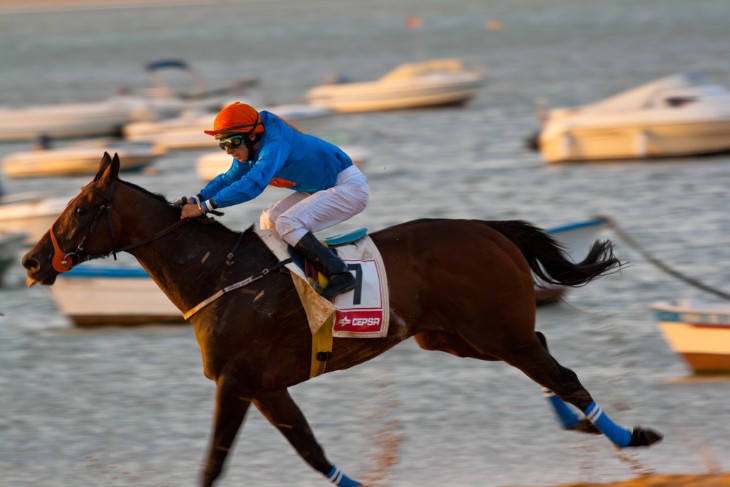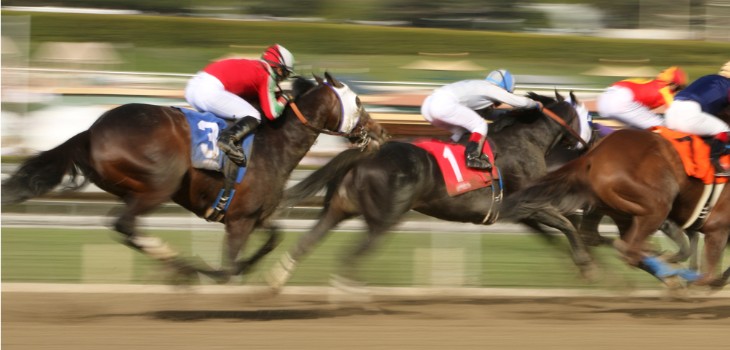- The Golden Age of British Horse Racing: A Look into the Past
- Modern Horse Racing: A Comparison with Historical Popularity
- The Economic Footprint of Horse Racing in the UK
- Iconic Horse Racing Venues: Centres of British Equestrian Sports
- Annual Attendance Figures: Measuring Popularity
- The Royal Ascot and Royal Patronage: Impact on Popularity
- Horse Racing and Media: Television, Print, and Online Coverage
- The Betting Industry: A Barometer of Horse Racing's Popularity
- The Social and Cultural Significance of Horse Racing in the UK
- Conclusion
The Golden Age of British Horse Racing: A Look into the Past
The 'Golden Age' of British horse racing is often considered to be the late 19th to early 20th century, a period that saw an unprecedented surge in the sport's popularity. During this time, horse racing became more than just an aristocratic pastime; it emerged as a national sport that attracted vast crowds. This era was marked by legendary horses, jockeys, and trainers who became household names, and their feats are still celebrated today.
One of the notable aspects of this period was the emergence of iconic races that captured the public's imagination. The Grand National, first run in 1839, became a symbol of British horse racing, renowned for its challenging course and the endurance required of both horse and rider. Similarly, the Cheltenham Festival, which began in 1860, grew in stature to become a prestigious event in the National Hunt racing calendar. These events, along with the classic flat races, attracted significant attention and investment, solidifying horse racing's position as a prominent and popular sport in the UK.
Modern Horse Racing: A Comparison with Historical Popularity
In contemporary times, horse racing in the UK has experienced a transformation, adapting to modern societal changes while maintaining its historical essence. Today's horse racing industry is a blend of tradition and innovation, attracting a diverse audience spanning various demographics. While the sport's popularity in the past was driven largely by the upper class and royalty, modern horse racing has broadened its appeal, becoming more accessible to the general public. This shift is partly due to the increased availability of racing events through various media platforms, allowing a wider audience to engage with the sport.
Another significant change in modern horse racing is the infusion of technology and modern marketing strategies. From advanced training techniques for horses to digital betting platforms, these innovations have brought a new dimension to the sport. The use of social media and online streaming services has also made horse racing more visible and accessible, helping to sustain its popularity. Despite these changes, the sport continues to face challenges, including maintaining interest among younger generations and ensuring ethical standards in horse welfare and betting practices.
The Economic Footprint of Horse Racing in the UK
The economic impact of horse racing in the UK is substantial, contributing significantly to the national economy. This impact can be analysed through various aspects:
- Employment: The horse racing industry is a significant employer, providing jobs in areas such as racecourse management, training, breeding, and media coverage.
- Betting Industry: Betting on horse races is a major economic driver, with billions of pounds wagered annually. This industry supports jobs and generates substantial tax revenue.
- Breeding and Training: The breeding and training of racehorses is a lucrative sector, contributing to agricultural and rural economies.
- Racecourses and Events: Racecourses are important economic hubs, especially during major racing events. They provide income through ticket sales, hospitality, and tourism.
While these figures represent a strong economic presence, the industry also faces challenges such as fluctuating betting patterns and the need for constant investment in infrastructure and animal welfare. Despite these challenges, the economic contribution of horse racing to the UK remains significant, underlining its enduring popularity.
Iconic Horse Racing Venues: Centres of British Equestrian Sports
The UK is home to some of the world's most iconic horse racing venues, each with its own rich history and unique character. These venues are not just sports arenas; they are cultural landmarks that symbolise the heritage and prestige of British horse racing. Ascot Racecourse, for example, is synonymous with British horse racing excellence. Founded by Queen Anne in 1711, Ascot holds a special place in the British racing calendar, particularly with the Royal Ascot meeting, which is attended by members of the Royal Family. Another historic venue is Epsom Downs, home to the Derby since 1780, widely regarded as one of the most prestigious flat races in the world.
Then there is Aintree Racecourse, renowned for hosting the Grand National, a challenging steeplechase that captures the nation's attention each year. Cheltenham Racecourse, famous for the Cheltenham Festival, is another jewel in the crown of British racing, primarily focusing on National Hunt racing. These venues are more than just racetracks; they are institutions that have helped shape the history of horse racing in the UK. Each year, they draw thousands of spectators from all over the world, showcasing the enduring appeal and popularity of horse racing in Britain.
![]()
Annual Attendance Figures: Measuring Popularity
Annual attendance figures are a key indicator of the popularity of horse racing in the UK. The numbers reveal interesting trends and insights:
- Major Racing Events: Events like the Royal Ascot, the Grand National, and the Cheltenham Festival consistently draw large crowds. The Royal Ascot, for instance, attracts over 300,000 attendees annually.
- Average Race Meetings: Beyond the high-profile events, average race meetings across the country also enjoy healthy attendance, indicating a strong grassroots level interest in the sport.
- Variation by Region: Attendance figures vary by region and racecourse, reflecting the diverse appeal of horse racing across the UK.
- International Visitors: The UK's major racing events attract a significant number of international visitors, underscoring the global appeal of British horse racing.
These attendance figures not only demonstrate the sport's popularity but also its economic impact, with visitors contributing to local economies through spending on accommodation, food, and entertainment. The sustained high attendance at major events, despite the challenges of digital entertainment and changing leisure patterns, is a testament to the enduring appeal of horse racing in the UK.
The Royal Ascot and Royal Patronage: Impact on Popularity
The Royal Ascot is not just a horse racing event; it's a British cultural institution steeped in tradition and royal patronage. This annual event, held at Ascot Racecourse in Berkshire, is famously attended by the British Royal Family, adding to its prestige and allure. The Royal Ascot's association with the monarchy dates back to its founding by Queen Anne in 1711, and this royal connection has been a key factor in its enduring popularity. The presence of the Queen and other members of the Royal Family in the Royal Procession is one of the highlights of the event, symbolising the close ties between the monarchy and the sport of horse racing.
The impact of this royal endorsement extends beyond the Ascot. It elevates the status of horse racing within British society, making it a sport that's closely associated with tradition and elegance. Royal patronage has also influenced the fashion and social aspects of horse racing events, with the Royal Ascot being as much about high fashion and socialising as it is about the races themselves. This blend of sport, tradition, and social spectacle has ensured that horse racing remains a popular and esteemed part of British culture.
Horse Racing and Media: Television, Print, and Online Coverage
The media's role in popularising horse racing in the UK is pivotal, with coverage spanning various platforms:
- Television Broadcasting: Major horse racing events are broadcast on national television, reaching millions of viewers. Channels like ITV Racing have dedicated coverage of key races, bringing the excitement of the sport into homes across the country.
- Print Media: Newspapers and racing magazines provide in-depth coverage, analysis, and tips, catering to both casual followers and racing enthusiasts.
- Online Platforms and Social Media: Websites and social media play a growing role in engaging younger audiences. Online streaming, live updates, and interactive content have made the sport more accessible than ever.
- Betting Apps and Websites: These platforms often provide live race streaming and updates, further increasing the visibility and popularity of horse racing events.
This comprehensive media coverage not only informs and entertains fans but also attracts new audiences to the sport. It plays a crucial role in maintaining the sport's profile and popularity, ensuring horse racing remains a prominent feature of the UK's sporting landscape.

The Betting Industry: A Barometer of Horse Racing's Popularity
The betting industry is intricately linked to the popularity of horse racing in the UK. Betting on horse races is not just a pastime; it is an integral part of the sport's culture and economy. The industry has evolved from the traditional bookmaker at the racetrack to sophisticated online betting platforms, allowing a broader audience to participate. This evolution has significantly increased the volume of betting on horse races, reflecting the sport's sustained popularity. The growth in betting activity is also a testament to the sport's appeal, as it adds an extra layer of excitement and engagement for the audience.
Despite its benefits, the betting industry faces challenges, particularly in promoting responsible gambling and ensuring integrity in the sport. Regulatory bodies like the Gambling Commission work to ensure fair play and protect vulnerable individuals. The relationship between horse racing and betting is symbiotic; the health and sustainability of one significantly impact the other. As such, the betting industry's growth and regulation play a crucial role in the future of horse racing in the UK.
The Social and Cultural Significance of Horse Racing in the UK
Horse racing in the UK holds a unique position, not just as a sport, but as a significant aspect of the country's social and cultural fabric. The sport transcends mere racing, encompassing a rich tapestry of tradition, fashion, and social interaction. Events like the Royal Ascot and the Cheltenham Festival are as much social occasions as they are sporting events. They are renowned for their fashion displays, with attendees donning elaborate and stylish attire, making these events cultural spectacles in their own right. This blend of fashion, socialising, and sport attracts a diverse audience, from racing enthusiasts to those more interested in the social aspects of the events.
Furthermore, horse racing has played a role in British literature and art, featuring in works by famous authors and artists over the centuries. This cultural representation has helped embed the sport in the national consciousness, making it an integral part of British heritage. The sport's ability to bring together people from all walks of life for a shared experience speaks volumes about its social importance. Whether it's the thrill of the race, the elegance of the fashion, or the joy of social interaction, horse racing offers something for everyone, contributing to its enduring appeal in the UK.
Conclusion
From its aristocratic origins to its current status as a beloved national sport, horse racing has consistently evolved while maintaining its core traditions. The sport's impact extends beyond the racecourses, contributing significantly to the UK's economy, culture, and social life. Iconic events like the Royal Ascot and the Grand National are not just racing spectacles but social and cultural events, drawing diverse audiences and showcasing the unique blend of tradition and excitement that horse racing offers.
For more information:








